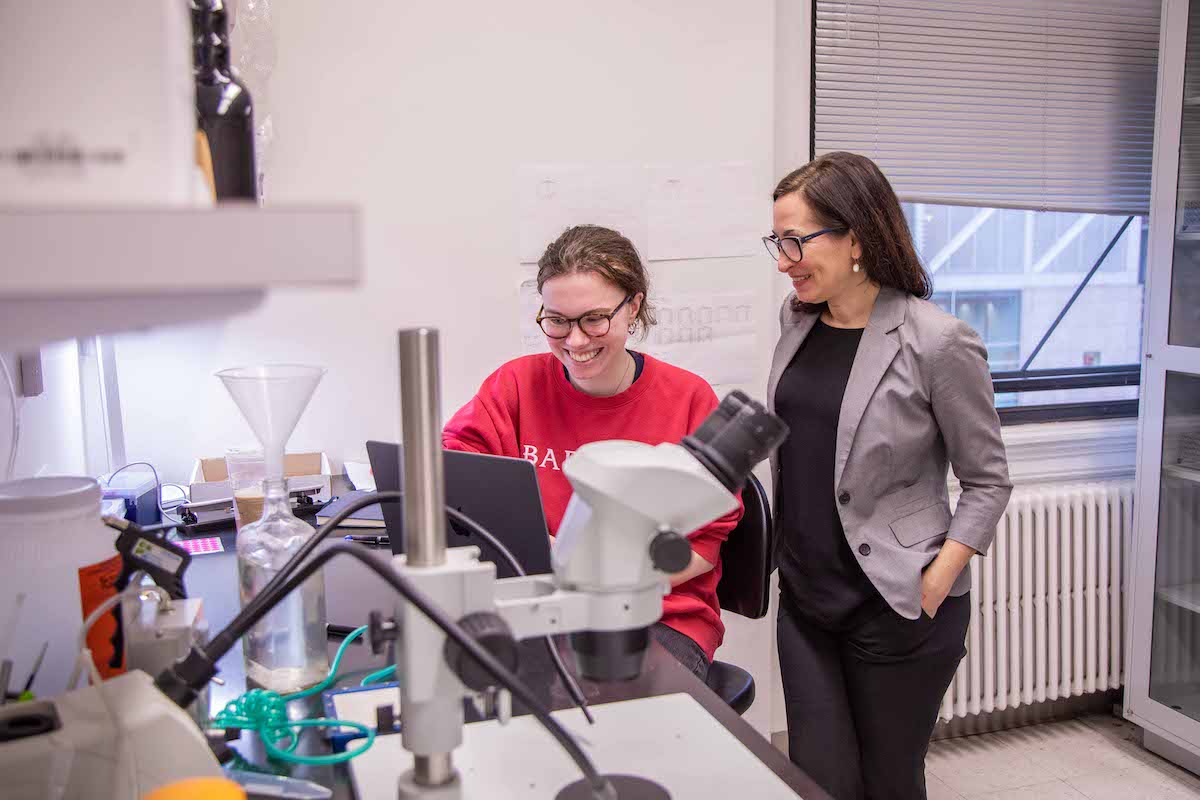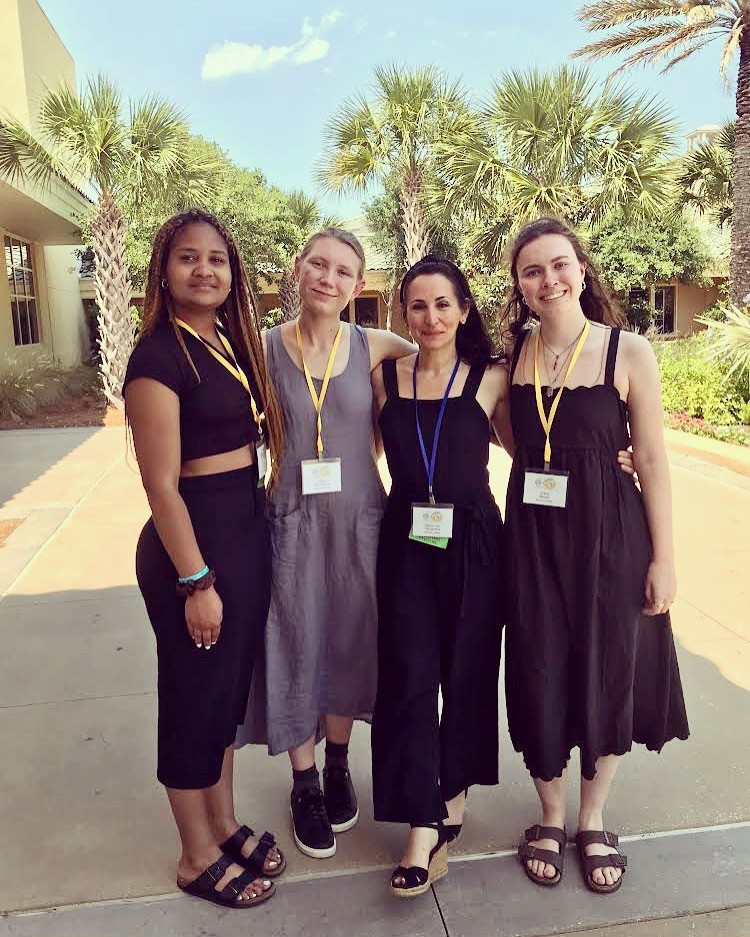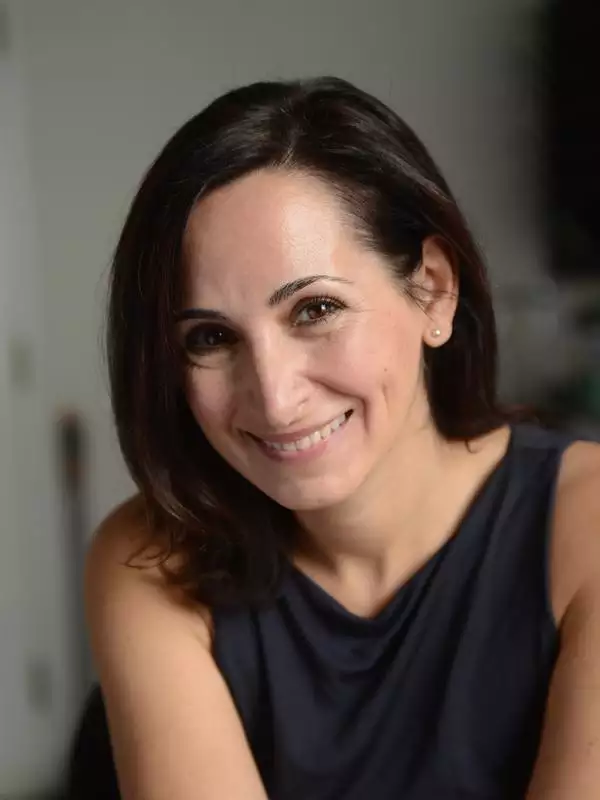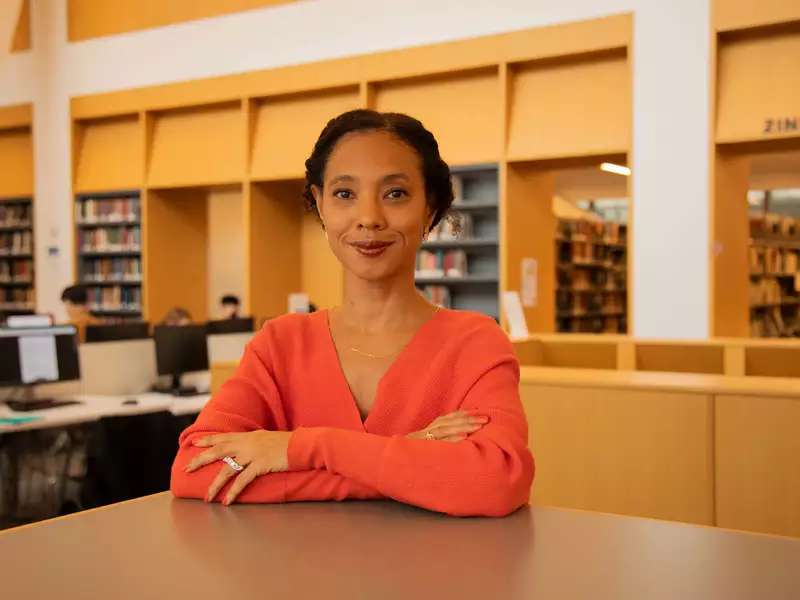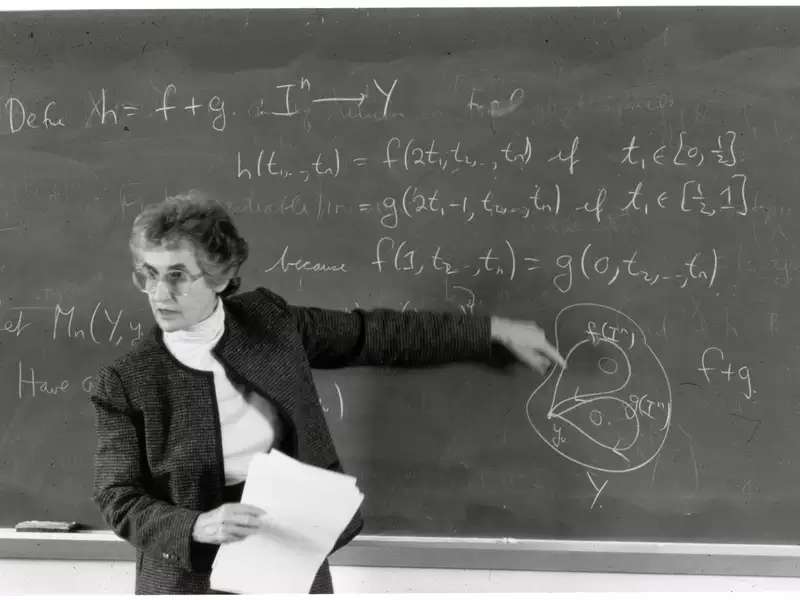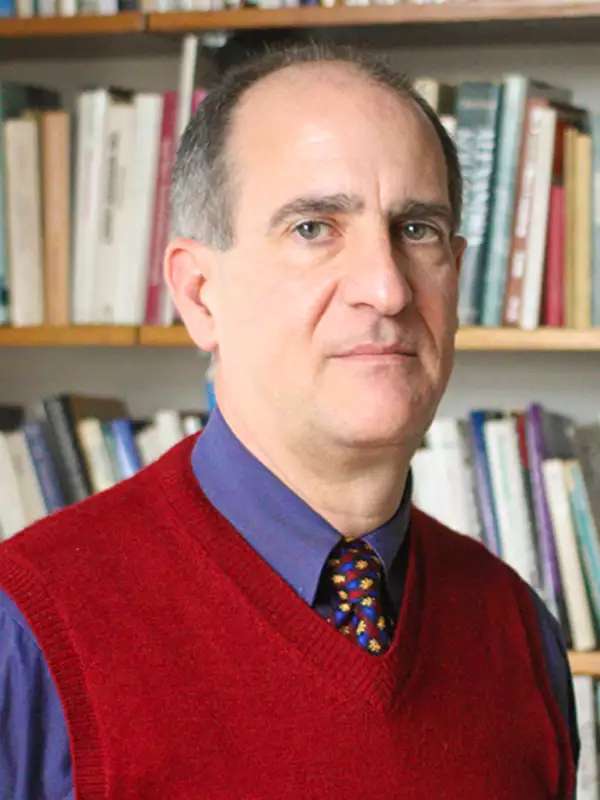When many people think of the circadian clock, the natural sleep/wake cycle might be what comes to mind. But what if the circadian clock could give scientists clues into how the brain’s connections for sleep/wake cycles differ in males and females?
María P. Fernández, assistant professor of neuroscience, will continue her research into this biological question as a National Science Foundation (NSF) Faculty Early Career Development (CAREER) award winner. Fernández will receive $998,289, via a five-year grant, to support her in producing innovative research.
The NSF called the honor its “most prestigious award in support of early-career faculty who have the potential to serve as academic role models in research and education and to lead advances in the mission of their department or organization."
Fernández has done exactly that since joining Barnard’s faculty in 2019 and establishing her laboratory on campus. In a 2020 study on circadian clocks, she confirmed that some segments of the circadian neurons don’t exclusively serve output functions but also act as receivers, giving scientists information on how to better address circadian rhythm disruptions in humans.
She has illustrated her commitment to students as a Summer Research Institute (SRI) mentor for the College’s most popular STEM program.
Watch the SRI video below, featuring Eve Bell ’22 and Grace Biondi ’23, 2021.
In 2022, she co-hosted the Barnard Athena Center for Leadership SPARK event “On Sleep as a Health Equity Issue,” with Elizabeth M. Cook, assistant professor in environmental science.
At Columbia, Fernández serves as a faculty member for the Doctoral Program in Neurobiology and Behavior and is an affiliate member of the Zuckerman Institute (ZI). She’s been named a Pew Latin American Fellow and received an International Society for Neuroethology Young Investigator Award.
“Winning the most prestigious award that NSF has for early career faculty is a huge achievement for María, and it speaks to her cutting-edge research and scholarship,” said Reshmi Mukherjee, Helen Goodhart Altschul Professor of Physics and Astronomy and Vice Provost of Research. “In addition to advancing her research this award will create a truly unique educational experience for her students.”
With the NSF grant, Fernández said, she can “build a strong research program and attract graduate students and postdoctoral researchers, as well as support undergraduate student researchers in the lab.” To learn more about her work, read her Research Reflections below.
I am looking forward to expanding my lab and mentoring a larger number of students and trainees, since this is one of my favorite parts of my job as a scientist.
What inspired you to become a scientist?
My mom, who provided an endless supply of books and always encouraged and supported my curiosity about the natural world. My grandfather, who used to spend hours each weekend telling me about the latest surprising things he had read; sometimes it was astronomy, sometimes evolution, oftentimes it was animal behavior. And Carl Sagan’s Cosmos, which I was fascinated by and read over and over again when I was a kid.
Winning this NSF Career Award means … ?
Having the resources and the support to focus on a long-term research project aimed at understanding how sex differences at the molecular and neuronal level result in differences in behavior, specifically in sleep/wake cycles.
[It also means having] the resources to develop a comprehensive neuroscience summer program for undergraduate students focused on studying neuronal circuits at different levels of analysis — from molecules to behavior — and to engage in science communication with the local community through a partnership with the Zuckerman Institute (ZI).
How did you become interested in your current research?
My interest in sleep/wake cycles started when I was an undergraduate student in Buenos Aires. I joined a research group led by my former professor and current friend Diego Golombek. We were interested in studying sleep/wake cycles in human populations living under natural conditions without exposure to artificial light.
After I started my lab at Barnard, I realized that much of the research had been conducted exclusively on males — this is true for many other areas of neuroscience. I started to pay more attention to the growing body of evidence for sex differences in sleep/wake cycles and the mechanisms that produce those daily rhythms. We found some surprising results, which served as the foundation for the NSF research proposal.
How does Barnard support your lab’s research program?
The grant is based on hypotheses that were built entirely from preliminary data generated in my lab at Barnard. Some of those experiments were conducted by undergraduate students, particularly the two “founding members” of the lab, Ausra Pranevicius ’22 and Eve Bell ’22.
The work that served as the foundation for some of the proposed experiments started during the summer of 2021, when a group of computer science students, led by Kimberly Li ’22, conducted SRI research, under my supervision, exploring the Janelia Drosophila [fruit fly] connectome. A connectome is a map of every single neuron in an organism and its connections to other neurons.
The support I received from Mark Godwin and Pamela Tuffley, from Barnard’s sponsored research office, was invaluable. They encouraged me to apply and helped to make sure everything was accurate and submitted on time. Colleagues at Barnard — for example, Rachel Austin [chemistry] and Reshmi Mukherjee [astrophysics] — provided feedback on some aspects of the proposals. And colleagues at Columbia, such as Larry Abbot (theoretical neuroscience) and Oliver Hobert (biochemistry and molecular biophysics), gave letters of support. Other colleagues from Barnard and Columbia, as well as colleagues in other institutions, were very supportive.
My department chair, Peter Balsam, wrote a strong letter of support, which is an important component of CAREER awards. The [Barnard] Center for Engaged Pedagogy helped me develop a comprehensive assessment plan, and Beyond Barnard provided career development plans for students.
The partnership with the Zuckerman Institute was essential to develop a comprehensive public outreach program.
How do you plan to use the grant over the five years?
We will take advantage of the well-characterized circadian clock neuron network in Drosophila and the unparalleled genetic tools available in this model system to conduct experiments involving neurogenetics, physiology, connectomics analysis, and behavior, aimed at exploring how the neuronal circuit underlying sleep/wake cycles may differ in males and females.
We will recruit a postdoctoral fellow to work on this project. Also, Grace Biondi ’23, a very talented neuroscience senior who has worked in the lab since her freshman year, will stay in the lab as a Post-Baccalaureate Fellow and research technician. She has already learned how to conduct, analyze, and interpret experiments that will be important for this project.
The education component is a summer research program for undergraduate students to conduct neuroscience research. I will develop this in collaboration with Aurel A. Lazar, Columbia’s professor of electrical engineering, to give students experience in neuronal circuit analysis.
Two outreach programs will be developed in collaboration with the ZI’s public outreach programs office. The first component, as part of the ZI’s Saturday Science program, is a chronobiology-related event for families called “Brain Clocks.” The goal is to create connections between scientists and their local NYC community.
The second outreach component is a yearly, public event focused on conversations with an NYC-based musician that will be called “Rhythms of Life.” This series of interdisciplinary events — conducted as part of the ZI’s Breakout Science program — aims to create public engagement in science through the arts. The events will be framed by musical performances and will feature a conversation between a musician and a neuroscientist.
